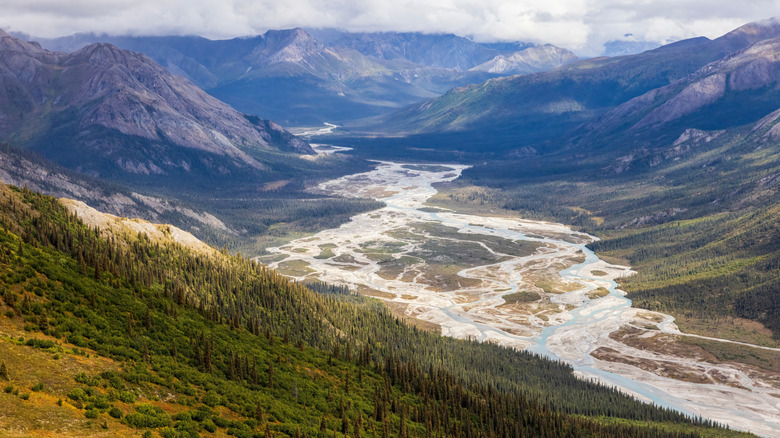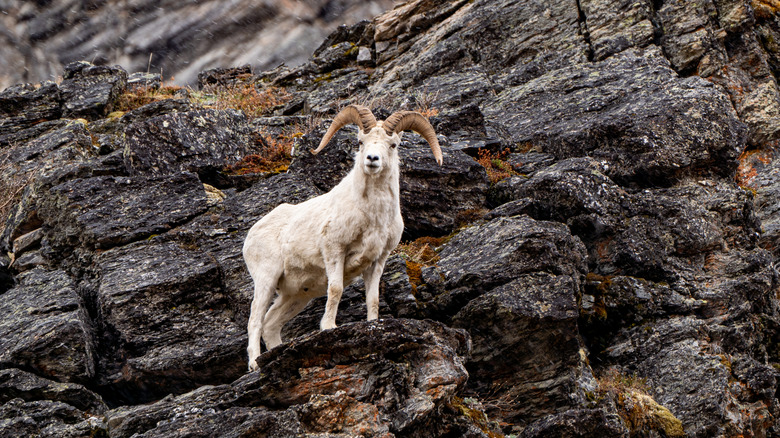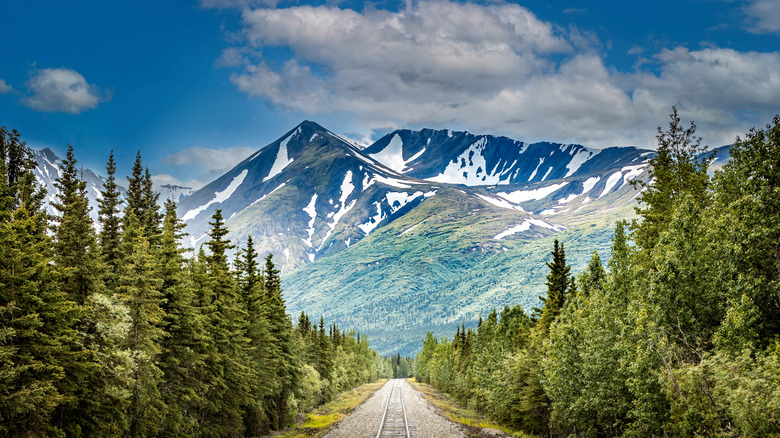An Awe-Inspiring National Park In Alaska Is A Remote Nature Escape With Unbelievable Views
Alaska is not just a state — it's a place where nature reigns. Glaciers shape the land, towering peaks rise above wild rivers, and silence stretches farther than any road. Each year, over 3 million people visit Alaska's national parks. But while the spotlight often falls on more accessible destinations, only around 11,000 of those millions of visitors make it to one of the state's most remote and pristine treasures — Gates of the Arctic National Park. The name "Gates of the Arctic" came from explorer Robert Marshall, who described two towering peaks in 1929 — Frigid Crags and Boreal Mountain — as symbolic "gates." The park was first protected as a national monument in 1978 and became a national park and preserve in 1980. To this day, it remains one of the least-altered ecosystems on Earth.
Gates of the Arctic National Park and Preserve spans 8.5 million acres, making it the second-largest national park in the United States — only behind Alaska's Wrangell-St. Elias National Park. Located entirely within the Arctic Circle, the park stretches across the rugged Brooks Range, the northernmost extension of the Rocky Mountains. The terrain includes glacier-carved valleys, alpine tundra, and unspoiled wilderness that serves as a haven for wildlife. Caribou migrations sweep across the landscape, while grizzlies, black bears, moose, Dall sheep, wolves, and over 145 bird species thrive. It's also home to six of Alaska's 13 Wild and Scenic Rivers: the John River, Noatak River, Kobuk River, Alatna River, Tinyaguk River, and the North Fork of the Koyukuk River. It's no wonder this remains one of the most stunning landscapes in Alaska — rugged, raw, and profoundly quiet. It's one of the many reasons Alaska should be your next bucket list destination.
Ways to experience the park's untouched wilderness
It's easy to fall in love with Alaska when exploring Gates of the Arctic National Park — untamed and free. Adventure here isn't for the faint of heart, but it's unforgettable. With no established trails, every step you take crosses truly wild ground. That's what makes backpacking and hiking so exhilarating. Each trip becomes a choose-your-own-adventure, whether you're following a ridgeline, forging your route across a glacial riverbed, or climbing a slope for views that stretch 100 miles. Wildlife encounters feel like something from another world. You might spot grizzlies digging on distant hills, golden eagles wheeling overhead, or Dall sheep balanced on steep granite ledges. Kayaking or packrafting the park's wild rivers adds another layer of immersion — a way to move with the land and feel what it means to be part of it.
If you're not up for backcountry hiking, flightseeing from a helicopter or float plane offers a bird's-eye view of the park's most iconic landmarks. From above, you can spot Mount Igikpak — the park's highest peak at 8,276 feet — and the surreal Arrigetch Peaks, which rise nearly 6,000 feet. "Arrigetch" comes from the Iñupiaq word for "fingers of an outstretched hand," and from the sky, you'll see why. These dramatic spires tower above the Kobuk River and have served as sacred landmarks for Indigenous travelers for generations. While there are many ways to explore, camping is a must-do experience. Pitching your tent beneath the open Arctic sky and spending a night in the wild is the only way to truly absorb the stillness of this place. There are no lights, no signals — just the wind, rushing water, the call of distant birds, and the hum of mosquitoes (Alaska's unofficial state bird).
Planning your trip to the Gates of the Arctic National Park
Gates of the Arctic isn't called America's loneliest park for nothing. Its isolation is part of its appeal — but also its challenge. Most travelers start by flying to Fairbanks, then chartering a bush plane to remote villages like Bettles, Coldfoot, or Anaktuvuk Pass — all of which offer helpful ranger stations, exhibits, maps, simple lodges, and trip-planning advice. From there, entering the park requires small aircraft with tundra tires or floats, as there are no roads or official entrances. Bettles is especially popular for flightseeing tours and floatplane access to river drop-offs or scenic flyovers with prices starting around $700 per person. Once you enter the free park, you're truly on your own. There are no amenities, no designated campsites or hotels, and no ranger presence. That means camping is your only option.
The best season for backpacking is summer, when the snow has mostly melted and the mosquitoes haven't yet peaked. Winter travel — including dog sledding or skiing — is possible from February through April, though it requires advanced skills and gear. If you're new to outdoor travel, review what gear you'd bring for a day at a national park — though out here, you'll need far more than just a day pack. Whatever the season, always check the forecast, and know your limits. Setting foot here means being fully self-sufficient. You'll need to bring everything — food, shelter, survival gear, and navigation tools. Essentials include bear spray, layered clothing, rain gear, sun protection, and a satellite communication device. Before you go, it's worth reading about what tourists should never do when visiting Alaska — especially following Leave No Trace principles: take nothing, leave nothing, and let this rare, breathtaking remote landscape remain exactly as wild as you found it.


